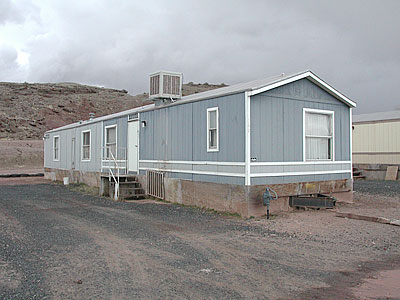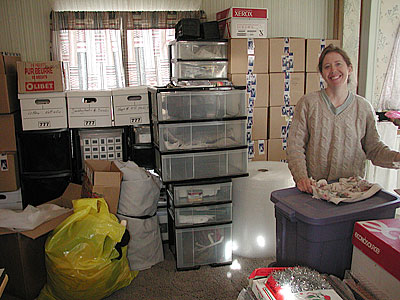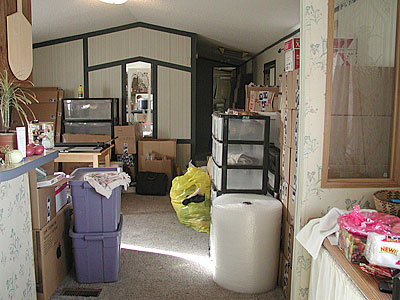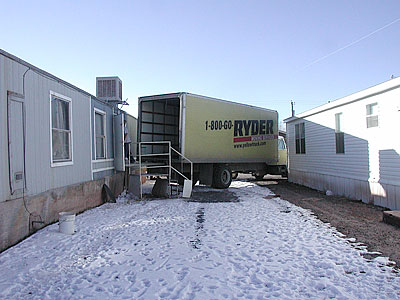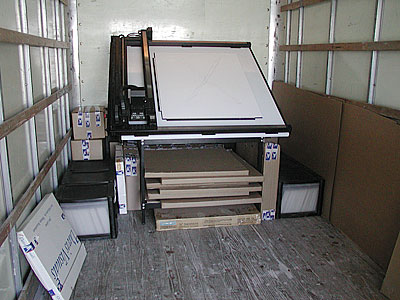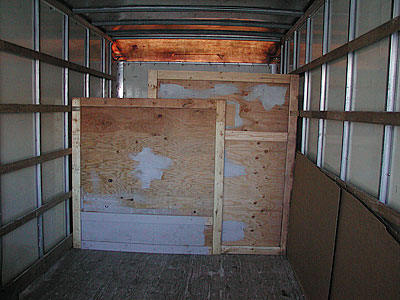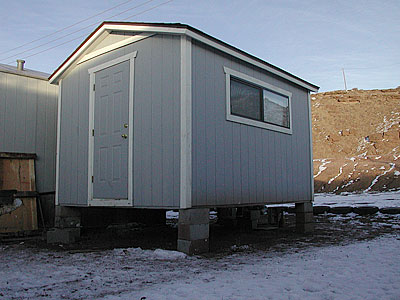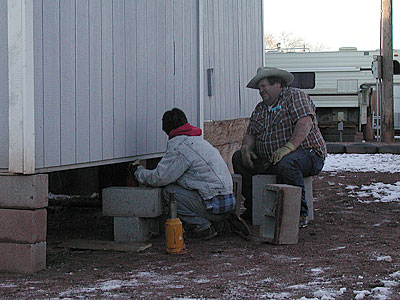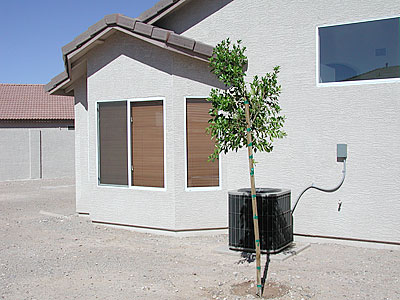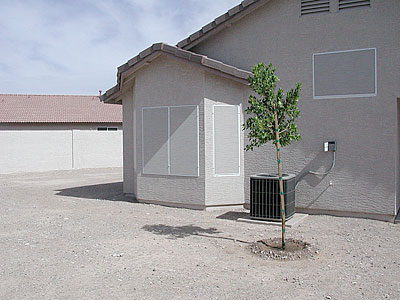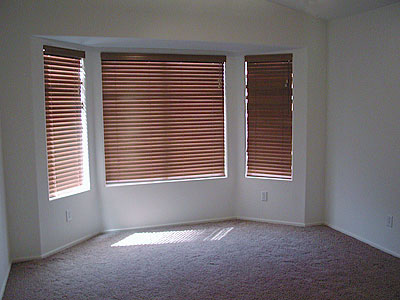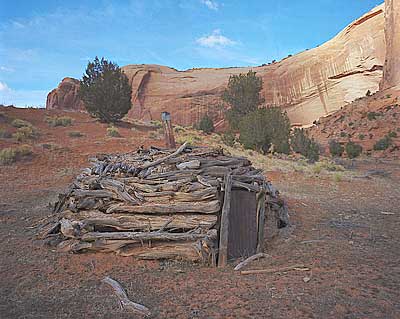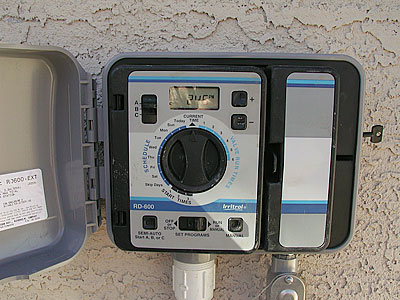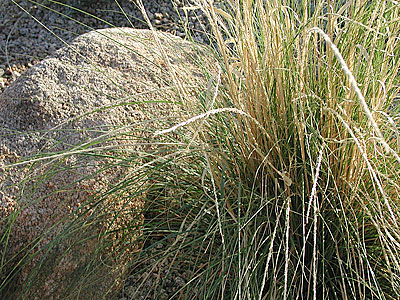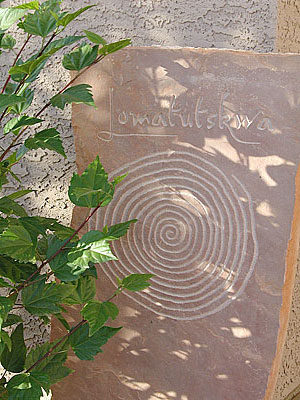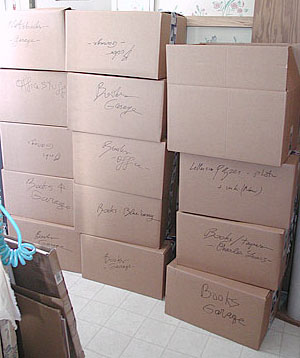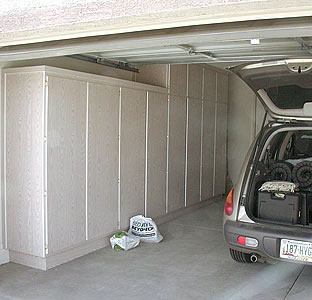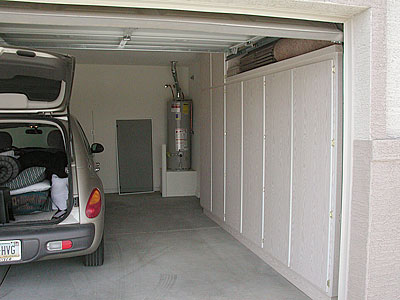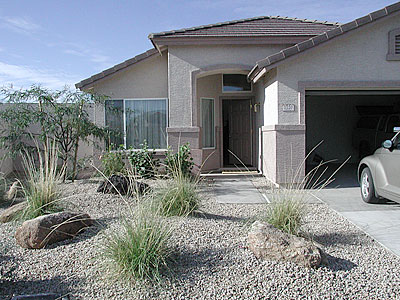|
|
Printing Insights #018How to Move your Studio
|
Part 1 |
Editor: We are very pleased that Alain Briot shares his experience about moving his studio from one location to a different one. Alain's articles are always a good reading and then he pays attention to so many details. Alain writes this diary while the real move is the focus of his life. Again the most current entry will be on top. |
| Alain about his diary: "I am not simply writing about moving but also using this opportunity (the diary and the move) to reflect about life in Chinle and about what I did while I lived here. I think this is part of moving in a sense, thinking about where I have been and where I am going as well as thinking of what I have achieved while I was here." |
| 12/29/2002 Moving |
| The big part of the move started today! We picked up
the 24 foot Ryder truck this morning in Gallup, New Mexico, and drove
it back to Chinle roughly 100 miles one way. There is no Ryder rental
in Chinle. Going from the PT Cruiser to the Ryder truck was quite an experience
to say the least.
We started packing some of my equipment right away. The most worrysome equipment to move is my computerized matcutter which we worked on first. It was disasembled, carried into the truck in pieces, then reassembled in the truck. We then placed boxes all around so as to prevent it from moving during the trip and finally attached plywood sheets in front of it to prevent it from moving forward or backward. The plywood was attached to the truck with braces. We stopped there for the day in regard to loading the truck. Tomorrow will be a full day of loading . We also moved a 10x12 shed which I had behind our place. The shed was raised to a height of about 4 feet using 20 ton jacks and placing masonry blocks underneath it one at a time. When the appropriate height was reach we drove a flatbed trailer underneath it, removed the concrete blocks, and there it was sitting on the flatbed. Once secured with straps it was driven away to its new location, not Peoria but to another property of mine. First, a photographs of packing boxes stacked up and waiting to be loaded. It's amazing how much room things can take when they are all boxed up off the shelves and out of the closets.
Here is the moving truck backed up as close as I could get it and with the loading ramp extended so as to make loading as easy as possible. We just need to remember that there are no stairs to come out of the house.
here is the matcutter first loaded into the truck, close and distant view, and second immobilized behind plywood sheets.
Here's the shed being raised on masonry blocks. I should have taken a photograph of it being driven away but by then I was quite tired and cold and I forgot.
|
| 12/23/2002 Setting up the Office |
| Keeping the heat out of the house
In my Epson 9600 diary I have written at length on the importance of creating a controlled atmosphere in which to work and setup your printers. By controlled atmosphere I mean controlling the humidity level and the temperature. This is especially true in the Phoenix area where outside temperatures can reach 120F in the middle of summer. In this context keeping the heat out of the house is very important. One way to achieve this is through the use of sunscreens. Sunscreens are very similar to screens routinely used to prevent insects from getting into houses. The only difference is the fabric used. For sunscreens a special fabric, which traps 80% of the sunrays responsible for heat and lets pass most of the rays responsible for light, is used. Here are two photographs of the rear side of my house, before and after the installation of sunscreens. This area of the house needs to be very well protected first because it is where the printers will be located and second because it faces straight West and thus is exposed to direct sun for half of the day (the front of the house faces to the East).
Notice the Ficus tree planted in a strategic location to create shade but which isn't creating much shade yet. Called a "15 gallon tree" to me it is more like a 15 gallon popsicle. Also notice that on the "before" photograph wood blinds are visible. Besides providing privacy the purpose of these blinds is also to create a multi-stage sun protection system. If it does get hot even with the sunscreens then I can lower the blinds to create a second barrier. In fact the blinds represent a third barrier since the windows have double-panes glass thus creating a layer of protection between the sunscreens and the shutters. When the Ficus is able to provide shade we will have a 4-layer sun-protection system. Finally notice that the perimeter wall is stuccoed. I just couldn't live looking at bare bricks. Another consequence of being an artist.
This view shows the interior of the office, with the blinds down. It will be interesting to compare this view of an empty room with one of the same room full of equipment later on. |
| 12/22/2002 Life in Chinle |
| A question I have been often asked is "How
does it feel to live in Chinle?" Well, it's very simple. There's
two kinds of lives. Life in Chinle and life everywhere else. That's
it, all is said, there's As you figured out I am greatly exaggerating. I wish it was that simple but I know you know this is an oversimplification and a stretch of my (prolific) imagination. But in a way it is aiming in the right direction. Those who live in extraordinary places know what I mean. There is a unique quality to life in certain places, a quality which may not be easy to define. Life in Chinle can be best described as casual laissez-faire. I won't attempt to explain this as it is the best description I can give and it took me seven years to do it. The Navajos are easy-going, humor-appreciative, non-judgmental people for whom having one spouse have a "real" job (such as my wife, Natalie) and the other spouse be an artist (that's me) is perfectly okay (Navajos don't use the expression "real" job. Anglos -the current politically correct way to describe "white people" at this time in history- do). So it was perfectly acceptable that I would be a photographer, and work at home, while Natalie was a teacher, and worked at school. None of the Navajos ever questioned this (some anglos did) and this in a sense gave me "permission" to continue. Of course Natalie's job made it possible to live in Chinle in the first place. Basically, there are three ways of living here if you are Anglo. You can either work for the school, work for the hospital, or run one of the local businesses. Since there are very few businesses this last category represents only a handful of individuals.
Hence nearly every Anglo works either for the school or the hospital. Besides the obvious differences in professional responsibilities the most noticeable difference between these two professions is income. Hospital workers make significantly more than teachers.
So how does it feel to live in Chinle? In my personal experience, it was a two sided situation. On the one hand I loved being right in the landscape, minutes away from locations that other people traveled half around the globe to witness personally, locations that were stunningly beautiful. I also loved being in what I came to call "the last frontier on the Colorado Plateau." On the other hand I realized early on that I had to get down to work,
focus on my photography, and build a successful business otherwise I'd
be in Chinle for a long long time. Life here is very inexpensive and
thus many people end up staying for long periods of time because of
financial reasons. Coming to Chinle is difficult (you have to have a
job, it is extremely remote, and one has to want to be here). But leaving
Chinle is even more difficult, partly because of economic Of course there are drawbacks and eventually it all boils down to whether or not the advantages outweigh the disadvantages. For me, until this year, they did. Chinle provided me with a place to live and work that was inexpensive, right next door to my subject, and without any distractions so I could focus on my work almost exclusively. It also provided me with a certain inspiration coming from living in such a unique location. One of the most exciting aspects of living in Chinle has been the opportunity it has afforded me to hike some of the most remote areas in the Southwest. At a time when the Colorado Plateau sees ever-increasing visitation levels, I like to refer to the Navajo Reservation as "the last frontier." No doubt visitation on the reservation is increasing but because many areas are unknown to visitors, and because many areas are difficult to find because of lack of information about them, lack of access roads, or Navajos living nearby, visitors mostly focus on the major attractions such as Monument Valley. Be reassured (or disappointed maybe): I have no intent on publishing a photography guide to the Navajo reservation. Most of the areas I have visited on the reservation have been accessed with the help of Navajo friends and on a private basis only. To take groups of people there, or let large number of people how to get there, would not only upset the local residents but also expose these places to more visitation than they can handle since they are not managed in any way. These are places where people live, where people herd sheep or grow crops. They are places where the ancestors lived and where remnants of their lives abound. Ancient hogans, long left alone but still in one piece, stand witness to a way of life now forgotten by most. Tools and artifacts attest to the hardships these people endured. Juniper-post fences and corrals indicate where they kept their livestock and how big of a herd they had. Grassless circles show where hogans once stood. Here you are not only surrounded by red sandstone. You are also surrounded by the past in a way that you may not witness elsewhere. A past which isn't so far away that you cannot find someone to tell you who lived here or meet a family relative of those who have come to pass.
|
| 12/21/2002 |
| Landscaping Being an artist isn't just having a studio to work in. It's also living in an environment in which art is part of under as many aspects as possible. In this approach landscaping is an opportunity to exert not only good taste but also artistic creativity. In Chinle landscaping was not an option. If the cows didn't eat my plants then the horses would (it's open range, whether in Chinle or outside of Chinle). And besides the dogs would have visited my flower beds on a daily basis. In Peoria if there has been cows they are long gone. Stray dogs are an opportunity for a newspaper article and animal control does control animals. Plus the community association actually wants you to landscape your yard and keep it looking nice.
I therefore designed my own landscaping, utilizing only a few elements, essentially deer grass and surface boulders with a mesquite tree for shade and and some Hibiscus thrown in for a touch of color. I am not in favor of flowers all over the place, too colorful for a desert setting, and not enamored of lawns, at least not until I am able to find a natural lawn somewhere in the Sonoran Desert wilderness. I am also not a fan of watering my plants either. I haven't had much practice in Chinle you see and I would much rather create photographs than worry about my plants dying. The good news is that there is this other great American invention -the automatic watering system- so that it looks like you are taking extremely good care of your plants while you really are just paying the utility bills.
Because the front yard landscaping was included in the purchase price I had to work with the assigned landscaper. It took a while to get him to agree to my decision of having just deer grass and boulders (plus a mesquite tree) and not to cover the yard with a variety of multicolored flowers which bloom all year long as seems to be the prevalent taste in my neighborhood. It was an uphill battle, and I had to spend extra money, but eventually I prevailed and the result exceeded my expectations.
I now have the back yard to work on a process which I have not started yet but which will take a direction similar to the front yard. A peek over the perimeter wall revealed that backyards do not get a prime treatment on most occasions and it saddens me to see that a great opportunity for expression is lost to a uniform layer of gravel or grass. Finally I installed a marker in front of the house, marker created by a friend of mine and inscribed with a spiral design and the word Lomatutskwa, Hopi for "Beautiful Ground" or "Beautiful earth", "soil", and other words related to what is under our feet since Hopi imparts more than a single meaning to certain words. I give a Hopi name to each of my properties. I have a section on my web site for "Kyaatataypi," "Fantastic View," and have a third property entitled "Hoklum", "Juniper Grove." These names find their origin in a feature unique to each location.
|
| 12/20/2002 The Packing Process |
| Here is an insight on the packing process I use. I decided to purchase packing boxes, and filing boxes from the company where I get the boxes I use to ship my work rather than look for used boxes at grocery stores or fast food restaurants as I did in the past. The big advantage of this approach is that you get to choose precisely the size of your boxes, and these boxes are all the same size, shape and appearance. In my case I selected boxes slightly larger than legal size Xerox boxes. This size fits most of my "stuff" and they are not too heavy to carry around. It's great to load a giant box because there's so much room in it but when you finally close it and try to lift it you are in for a surprise.
Notice that the boxes are marked "garage" or "office"
depending on their intended destination. I
The cabinets line both sides of the garage from floor to ceiling and provide massive storage space. Needless to say it probably won't be enough but it is good start. The shelves inside the cabinets are adjustable in height so that large and small items can be accommodated. Plus both cars can still fit in the garage. |
| 12/19/2002 |
Why move?
Why move? Well, as with many questions whose answer is seemingly obvious, because I can. I gather that this may not satisfy some of you but indeed that is part of the logic at work here. "Have House, will travel" so to speak. In other words: nothing is holding me back here, I have a beautiful house and triple the studio space waiting for me, I am about to explore a new area photographically, namely the Sonoran Desert, and my wife is just as excited about the move as I am. Why should I stay? I have been in Chinle, next to Canyon de Chelly, since August 1995. In seven and a half years I went from not knowing how to sell a photograph to being one of the best selling living photographers in the United States. I went a long way in a seemingly unlikely location for such an endeavor, square in the middle of the Navajo Reservation. Unlikely, maybe. After all Chinle is a great location, indeed one of the very best, for landscape photography. Several world class photographic locations are minutes away from my doorstep and many more can be reached in only a few hours drive. Tsegi Overlook, where I took some of my most exciting photographs, is only 5 minutes away. Spiderock Overlook, where I captured some of the most incredible snowstorms, is 20 minutes away. Monument Valley is an hour and a half away, close enough to get there at sunrise if I get up early. Southern Utah is just across the border between Utah and Arizona, a couple of hours away. White Sands, New Mexico in less than a day drive. I can go to Grand Canyon in 5 hours, and so on. Chinle is a central location as far as photography goes. In many ways one couldn't pick a better place in that respect. But when it comes to business Chinle is one of the most challenging places to live in. While nothing is very far in terms of photographic locations, nothing is very close in terms of doing business. The closest town is Gallup, New Mexico, and that's 200 miles round trip. Want something larger? Here's Flagstaff, Arizona, 400 miles plus round trip. Not large enough? Try Phoenix, Arizona, 700 miles round trip (not counting the miles you will cover in the city). Needless to say I have kept business trips to a minimum and done most of my business over the internet (if I drive I'd rather drive to a photographic location). In fact it is clear to me that without the internet I would most likely never have come to Chinle. Email is crucial to the way I operate because it allows me to communicate with people easily as well as keep my long distance calling costs to a minimum. So is my web site, through which I can not only do business but provide information about myself as well. I also publish extensively over the internet. The article you are now reading, as well as many other articles I previously wrote, is accessible exclusively on the internet. But the internet cannot make up for physical reality all the time. As a claim-insurance person told me after inspecting my in-need-of-repairs truck in Chinle a few years ago "the good news it we can fix it and the insurance will cover it. The bad news is you can't do it over the internet." In clear, I had to drive my truck to Gallup. It also meant I had to arrange for someone to drive me to Gallup and back to Chinle then back to Gallup, and because this person could only do so during the weekend it also meant I was without a vehicle for a full week. It is safe to assume that if you live in a large city, or just in a city, what you are used to do on a daily basis is just not possible in Chinle. If you run a business in a City then Chinle is in an entirely different world altogether. Take getting supplies for your business, even the simplest supplies, for example. Unless you need a pen, and you are not too picky about what kind of pen you get, you will have to order it. This holds true for just about anything I need. There's two stores in Chinle: Basha's, a grocery store, and The General Store which, as you guessed, is a general store. Neither has very much and neither has it for very long. Groceries, yes. Business supplies, no. Certainly, in the beginning, I tried to find what I needed locally but I soon grew tired of being frustrated. It didn't take me long to realize that I was better off ordering everything over the phone, or over the internet, and have it delivered to me by UPS, FedEx, or the Post Office. I soon learned the major advantage of this approach: since placing a phone or internet order takes only a few minutes I could continue to work at home while UPS (or other carrier) was delivering my supplies to me. This is a very efficient way to run a business, and one that I will continue using after I move. Now that I become used to it I have no desire to change. This approach saves me a lot of time, time which I can use for more creative endeavors such as taking photographs. In a city as in Chinle, I'd rather drive to a photographic location than to a store. But having supplies delivered to me wasn't enough. I soon realized that unless I ordered a significant amount of supplies at once I had to reorder the same things frequently. Three years ago I made the decision of ordering my most frequently used items on a one-year-supply basis based either on my previous-year use of these items or on my current-year projected use. The only items I did not follow this approach with is ink, for fear it would dry before I could use it up, paper, because of concerns that the coatings would go bad, and frames, because I just cannot stock more than about 300 frames at once for lack of space. This may seem like a surprising approach to some. In reality, it is a very efficient way of running a business. First, ordering once a year is very effective time-wise since whatever time is needed to place the order, receive it, and store the goods in your location is only spent once for the whole year. After that you no longer have to worry about this particular item. Second, I traditionally order my most needed supplies in February, before the season starts, at a time when business is slow and thus I have time to focus on getting my stock of supplies for the year. Third, ordering large quantities of the same items qualifies me for lower prices and also reduces shipping costs as it is less expensive to ship a single large shipment than several small shipments totaling the same number of pieces. Finally, some of these shipments come by truck, on a pallet, thereby affording better protection to the goods. All this to say that if the supply warehouse was in the same city I
live in I may have driven there every other week to get what I need
for these two weeks. In Chinle I had to learn to operate differently
and in the process I believe I devised an more efficient way to operate,
a way that I will continue to use after I move |
| 12/18/2002 Introduction |
| Moving, a verb which describes an action each of us
has to perform at some point in our lives. A verb which also describes
an activity that can be both exciting and frustrating at the same time.
The thought of going to a new location, of starting a new life, of living
in a new home and of, overall, getting a brand new start is counterbalanced
by the necessity to pack all our belongings, load them in a truck, and
hope that when we get to our destination none of has broken or gotten
lost.
It is this endeavor, indeed this enterprise, that I am about to describe in this diary. But, it is moving with a twist that I am about to describe since, as artists, as photographers, moving means not only moving our household but also, and more importantly, our studio. This complicates the matter another notch because to most of us I surmise, and to myself definitely, the thought of loosing or breaking a household item is benign compared to the thought of having any of our studio equipment suffer the same fate. So how do you move your studio so that when you get to wherever it is you are going your equipment is intact, ready to be installed in its new location, and -most importantly- ready to work? Well, in two words, through good planning and good packing. As we all know, planning is half of the game. You don't want to rush any of this and throw everything en vrac in the truck. Careful packing is the other half of the same game: each item must be carefully packed and carefully loaded in the moving truck. As I write this I am surrounded by boxes full of "stuff" as belongings start to be known when they are hidden away in boxes that all look the same. Although I won't actually move until the end of the month I have already started packing things. In fact, because the new house I am moving to is only 350 miles from where I am now, I have already moved small, fragile items in my car and truck, thereby preventing possible damage to these items. I have also set up the new house so that it is basically ready to live in. Because all the furniture and appliances are new, and was delivered directly to my new house, what remains to be moved consists almost entirely of my studio equipment. However, given how much equipment I have, this is no small matter. Among the items to be moved are a computerized mat cutter, the Epson 9600 (see diary), 8 computers and monitors, several desktop drives, 2 scanners, several desks, shelves and filing cabinets, a large stock of paper, mat board and other supplies, all my framing and matting equipment, numerous framed and unframed pieces, a lot of books, numerous small, yet fragile, items, and most likely many other things which I forget to mention or have hidden far into my subconscious because I really don't want to think about moving them. In the coming days I will describe how this process is unfolding, provide you with photographs of the move, and relay some of the thoughts associated with this endeavor. Stay tuned because this will be interesting. It will also, to my knowledge, be the first live written account of a photographer moving his studio. |
|
| For Comments post in our News Group |






